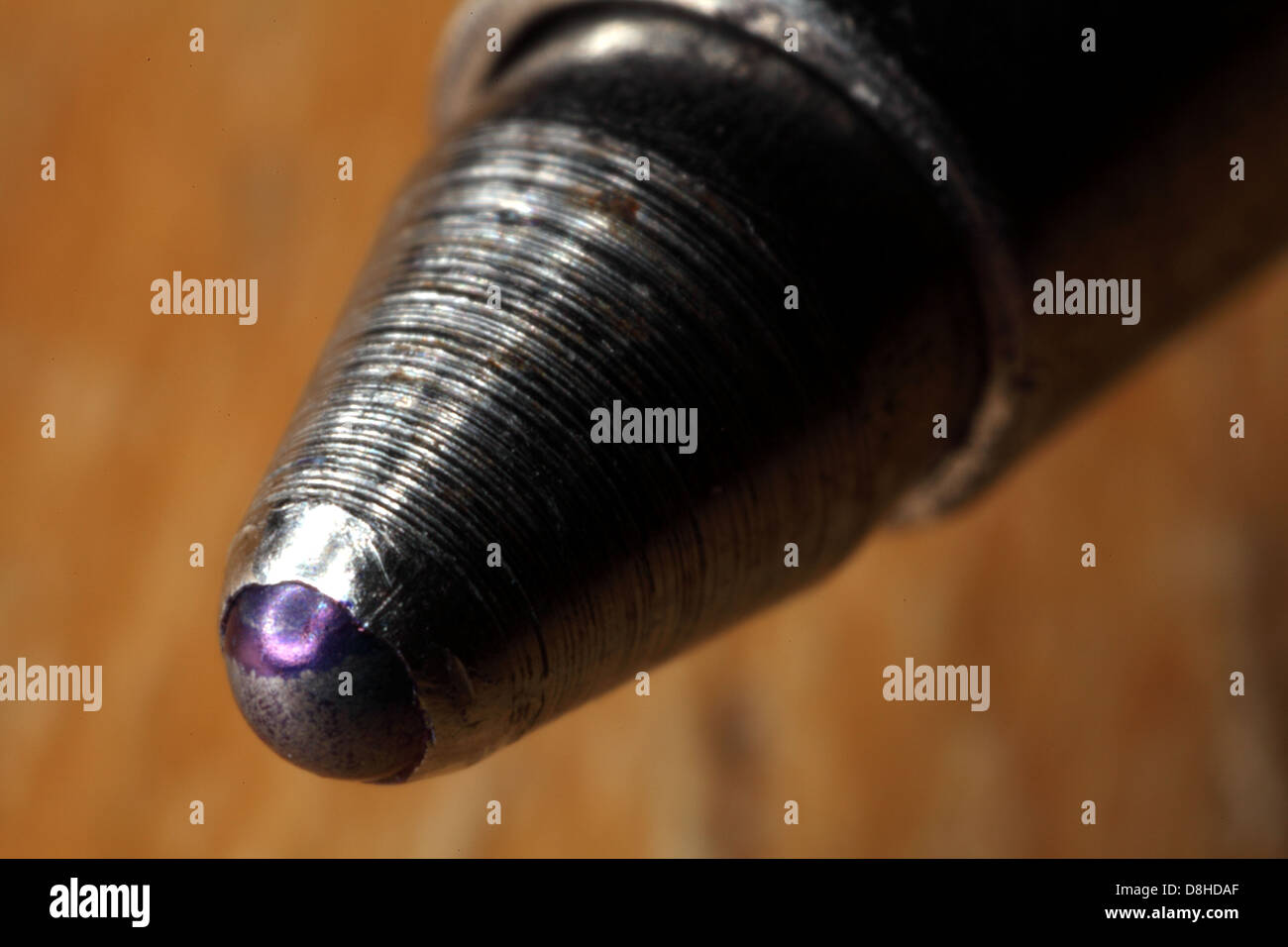Ink Rollerball, from a ballpoint macro image, of a Parker Pen

Image details
Contributor:
Tony Smith / Alamy Stock PhotoImage ID:
D8HDAFFile size:
60.2 MB (1.3 MB Compressed download)Releases:
Model - no | Property - noDo I need a release?Dimensions:
5616 x 3744 px | 47.5 x 31.7 cm | 18.7 x 12.5 inches | 300dpiDate taken:
3 February 2010Location:
England, Great Britain , UKMore information:
A ballpoint pen, also known as a biro (British English), ball pen (Hong Kong, Indian and Philippine English), or dot pen[2] (Nepali English), is a pen that dispenses ink (usually in paste form) over a metal ball at its point, i.e. over a "ball point". The metal commonly used is steel, brass, or tungsten carbide.[3] The design was conceived and developed as a cleaner and more reliable alternative to dip pens and fountain pens, and it is now the world's most-used writing instrument; millions are manufactured and sold daily. It has influenced art and graphic design and spawned an artwork genre. Some pen manufacturers produce designer ballpoint pens for the high-end and collectors' markets. The concept of using a "ball point" within a writing instrument to apply ink to paper has existed since the late 19th century. In these inventions, the ink was placed in a thin tube whose end was blocked by a tiny ball, held so that it could not slip into the tube or fall out of the pen. The first patent for a ballpoint pen was issued on 30 October 1888 to John J. Loud, who was attempting to make a writing instrument that would be able to write "on rough surfaces—such as wood, coarse wrapping-paper, and other articles" which fountain pens could not. Loud's pen had a small rotating steel ball held in place by a socket. Although it could be used to mark rough surfaces such as leather, as Loud intended, it proved too coarse for letter-writing. With no commercial viability, its potential went unexploited, and the patent eventually lapsed László Bíró, a Hungarian newspaper editor (later a naturalized Argentine) frustrated by the amount of time that he wasted filling up fountain pens and cleaning up smudged pages, noticed that inks used in newspaper printing dried quickly, leaving the paper dry and smudge-free. He decided to create a pen using the same type of ink. Bíró enlisted the help of his brother György, a dentist with useful knowledge of chemistry, to develop viscous ink formula